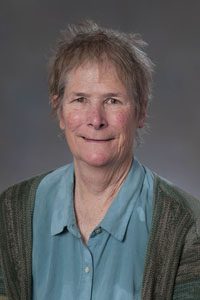
NEW YEAR (2020) WELCOME MESSAGE FROM ASOR PRESIDENT SHARON HERBERT

My own history with ASOR goes back to the 1980s, when I sought CAP affiliation for the University of Michigan/University of Missouri excavations at the Hellenistic site of Tel Anafa in the Upper Galilee of Israel. It has continued to this day through work on other ASOR sponsored excavations, publications, and committees. Over the past 7 years I have served as Vice President; from this position I have observed first hand ASOR’s growing strength both on its traditional fronts and expansion into other arenas, most notably our cultural heritage initiatives.
I feel fortunate to come to the ASOR presidency at a time of its greatest strength to date. The credit for this goes predominantly to the efforts and vision of our past President, Susan Ackerman, and our continuing Executive Director, Andy Vaughn. They have been vigorously supported in their efforts by the commitment of our active Board of Trustees, hard work of our officers, member committees, and the enthusiasm of our members and friends.
Today, ASOR membership is at its highest level ever. Our two traditional public faces—the Annual Meeting and print publications, BASOR, NEA, and JCS—are flourishing. Our most recent annual meeting, in November 2019 in San Diego, was our 2nd largest ever. There were nearly 950 total registrants and over 500 papers delivered; San Diego was second only to our 2017 meeting in the perennial favorite, Boston. As we gear up for the November 2020 meeting, once again in Boston, we already foresee another blockbuster. The Program Committee has received an unprecedented number of workshop and sessions proposals. Likewise, our new partnership with the University of Chicago Press has widened the distribution of our journals, while our digital publications, News@ASOR and Ancient Near East Today, have extended our outreach to over 15,000 Friends of ASOR. We now sponsor 53 fieldwork projects and 25 publication projects over 10 countries.
We have been extraordinarily blessed on the fund-raising front in recent years. Thanks to generous donations our fellowship support for our members has grown, and we are able to fund collections research and conservation in addition to student participation on excavations. In less than two years, between 2018 and 2020, our membership raised over $1.6 million to enable us to purchase a permanent home, an office building in Alexandria, Virginia, which we have named the James F. Strange Center in honor of Jim Strange, a loyal and distinguished member of many years. We moved in last April. We share this space with two of our overseas research centers, ACOR and CAARI. From this stable and strategically placed location in the greater Washington D. C. area, we will be able to serve our membership more efficiently and to network more successfully with other archaeological societies and foundations headquartered there.
The key word for ASOR over the past decade has been expansion– in membership and scope of activities, and in areas and kinds of engagement. Expansion is not an end in itself, however. We have to work diligently to maintain and improve the quality of our programs and meet the needs of our membership. We have successfully taken up opportunities as we have seen them in cultural heritage and created others there, and in internationalization and outreach while supporting research projects of the highest quality. We stand where we do today thanks to carefully crafted and nimbly executed strategic plans and targeted initiatives that produced codes of professional conduct responsive to the concerns of our 21st century membership. All we know for certain about the future is that there will be change. Nowhere is this more certain than in the Near and Middle East, where ASOR’s activities are focused. Come what may in the three years of my term as President, I pledge to work together with all of you to keep ASOR true to its missions of initiating, encouraging, and supporting research into, and public understanding of, the history and cultures of the Near East and wider Mediterranean, from the earliest times.
So, I close as I began: I am honored to have been chosen to lead such a vibrant and on-the-move organization, and I feel extremely fortunate to have taken office at a moment when ASOR is in a position of such incredible strength. It’s with great enthusiasm, then, that I look forward to the next three years and to ASOR’s continued success.